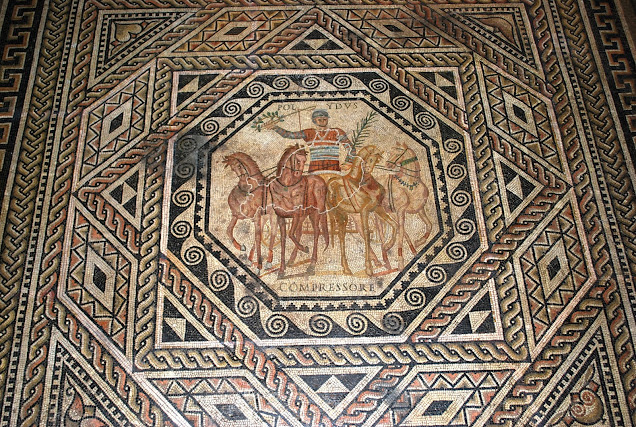Theater of Regina Turdulorum (Spain)
This afternoon, I visited the theater of Regina Turdulorum. About a 1.5 hour drive from Seville, heading north. The excavation is located in a deserted area. Only the hamlet of Reina is within walking distance. There were no other visitors, which added to the serene atmosphere.
Pliny mentioned the name of Regina as one of the 'oppida non ignobilia' (or independent community), located in Baeturia Turdula founded in the layout of the road that runs from Augusta Emerita at Corduba. Among the reasons for founding the city is the mineral wealth of the area. Furthermore, there is political reason, control of the territory of Túrdulo people occupying this area.
The first archeological excavations off the theater, dated mid first century AD, started in the 1970s. At that moment the ruins were known as "The thick wall", referring to the solid concrete remains. The theater was built about the second half of the first century, making use of a soft slope which was used to construct a part of the stands. The second section, or summa cave, was supported by the upper structure. You can still see its outline, but no visible traces survived.
Inscriptions mentioning three unknown individuals of the pre-Antonine periode - so before 138 AD - were found in the orchestra.
The scaenae frons was flanked on either side by the parascanium and the basilica. A lateral passage (aditus maximus) gave access to the basilicae used as a space for receiving the public. The scaenae frons was supported by columns. Three accesses allows the entry or exit of actors onto the stage. One central (valva regis) and two lateral (valva hospilitum). There were also lateral access, which allowed actors to make surprise appearances.
The yellow seats are made of iron as an imitation of the original seating which disappeared.
In the 4th century the building was abandoned and the orchestra was used as a stable. The stage was occupied by the hermitage of the medieval farmstead of San Pedro de Villacorza. Remains are buried at the back of the building.
More pictures of the theater of Regina Turdulorum can be seen here!







